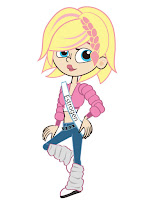 |
| The decisions of this chimpanzee living in the Tchimpounga Chimpanzee Sanctuary are affected by his social situation. Photo by Alex Rosati. |
All animals have to make choices. Some choices are obvious: Choose the thing that is known to be of high quality over the thing that is known to be of low quality. But usually, the qualities of some options are uncertain and choosing them can be risky. As with us, the likelihood of some primates, birds, and insects to choose riskier options over safer ones can be affected by outside influences. And we aren’t the only species to have our risk-taking choices influenced by social context.
Anthropologists Alex Rosati and Brian Hare at Duke University tested two ape species, chimpanzees and bonobos, in their willingness to choose the riskier option in different social situations. They tested chimpanzees living in the Tchimpounga Chimpanzee Sanctuary and bonobos in the Lola ya Bonobo Sanctuary, both in the Democratic Republic of Congo. Most of the apes living in these sanctuaries are confiscated from poachers that captured them from the wild for the pet trade and for bushmeat. In these sanctuaries the animals live in social groups, generally spending their days roaming large tracts of tropical forest and their nights in indoor dormitories. This lifestyle rehabilitates their bodies and minds, resulting in psychologically healthy sanctuary inhabitants.
It is in these familiar dormitories that Alex and Brian tested the apes’ propensity for making risky choices. For their experimental set-up, an experimenter sat across a table from an ape and offered them two options: an overturned bowl that always covered a treat that the apes kinda like (peanuts) versus an overturned bowl that covered either an awesome treat (banana or apple) or a lousy treat (cucumber or lettuce). In this paradigm, the peanut-bowl represents the safe choice because whenever the ape chooses it, they know they’re getting peanuts. But the other bowl is the risky choice, because half the time they get fruit (yum!), but the other half of the time they get greens (bummer).
 |
| This figure from Rosati and Hare's 2012 Animal Behavour paper shows Alex demonstrating the steps they would go through before the ape chose one of the two options. |
Alex and Brian found out that whereas bonobos chose the safe option and the risky option about equally, the chimpanzees were significantly more likely to choose the risky option. But despite this species difference, both species chose the risky option more often in the “competitive condition”. Neither species increased their risk-taking in the “play condition”.
This still leaves us with some questions to ponder though. Are apes more likely to take risks when an experimenter is offering food and taking it away because of a heightened sense of competition, or is this the result of frustration? And would we see the same effect if the “competitor” were another ape of the same species, rather than a human experimenter? How would their behavior change if they were hungry? These questions are harder to get at, but this research does demonstrate that like in humans, the decision-making process in chimpanzees and bonobos is dependent on social context.
Want to know more? Check this out:
Rosati, A., & Hare, B. (2012). Decision making across social contexts: competition increases preferences for risk in chimpanzees and bonobos Animal Behaviour, 84 (4), 869-879 DOI: 10.1016/j.anbehav.2012.07.010











